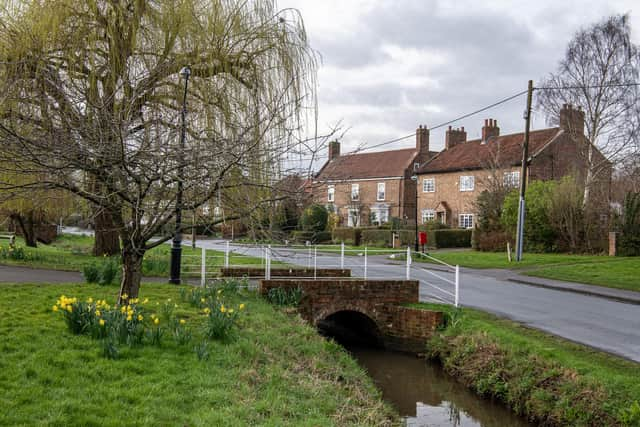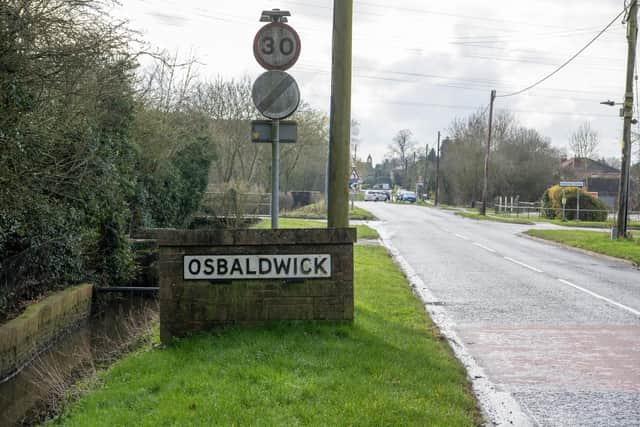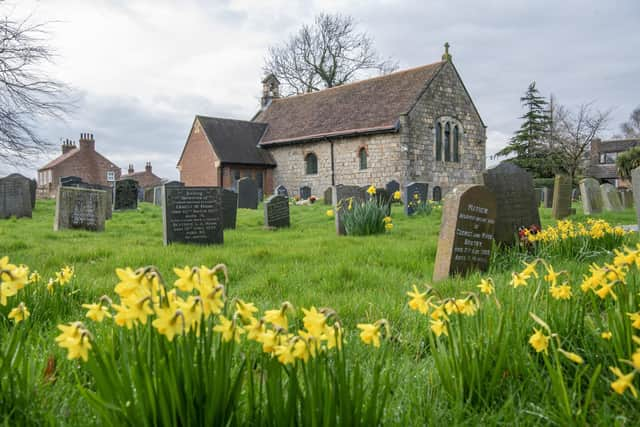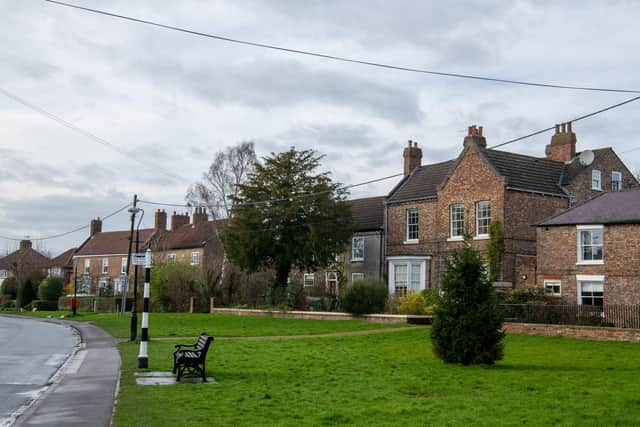Village of the Week: Osbaldwick is a hidden hamlet suspended in time
It is one of the busiest roads in the region and hardly a week goes by without talk of it being closed due to an accident, snarled due to roadworks or of the need to make it a dual carriagway.
It is 70 miles in length and links the urban city sprawl of Leeds with the seaside town of Scarborough, via the historic city of York.
Advertisement
Hide AdAdvertisement
Hide AdAlong the way, as you leave its urban stretches behind it takes you to some of the most charming rural villages (as far as they can be on a major road).


As a child I can recall road trips to and from the seaside and passing through some of them.
Ganton being one and Rillington another. Maybe it is said with an air of nostalgia and how you see things as a child compared to reality, but Rillington is one of the most charming places I have ever seen.
There is something almost stuck in time about it and it makes the imagination run back a few generations to wonder what life was like in that village back then.
Advertisement
Hide AdAdvertisement
Hide AdEven now, I’d like to think it is not that much different and even now on my way through there I see it in the same way.


However, as these are on the A64 you have to pass them by but there are other hidden hamlets that this thunderous road whistles past and perhaps we don’t stop to take the same look at it.
Osbaldwick is one of them.
You can get to it by leaving the A64 at the big junction for Grimston Bar and heading towards the city – or you can take a slightly more sedate route through the smaller village of Murton to get to Osbaldwick.
What I like about this is that, despite the new development, there is open countryside where sheep and livestock graze, traditional farm buildings dotted around and an ancient church is visible through the trees and hedgerows.
Advertisement
Hide AdAdvertisement
Hide Ad

The houses are not a tick box excercise for an architect without imagination, such as we tend to see more of these days. But they are spread out, with land, not overbearing and not exactly the same as next door.
There is also a lot of greenery.
St James’ Church was built in the 1200s. It was badly damaged in a storm, in 1834 and not repaired. For a while it was used as a pig sty but in 1914 it was restored.
A country road takes you past industrial estates, agriculture businesses and farms into the village of Osbaldwick.


Again there is a mix of newer houses and quaint ones that have stood the test of time.
Advertisement
Hide AdAdvertisement
Hide AdI read that none of the older houses, though, are older than the 18th century surprisingly, especially as Osbaldwick has been a civil parish since the 11th century.
We know that York has a long-standing, rich and detailed history from battles to religion and trade and Osbaldwick – a couple of miles out of the city centre and historically part of the North Riding of Yorkshire until 1974, part of the district of Ryedale from then until 1996 and part of the City of York unitary authority after that – certainly builds on that.
It is mentioned three times in the Domesday Book as Osboldewic and the village is named after Osbald, an earl in the kingdom of Northumbria.
There are reams of information about the manors of Osbaldwick, rows between the churches and the Crown concerning the payment of rates and ship money and after that who owned what land.
Advertisement
Hide AdAdvertisement
Hide AdThere are also records of charitable donations to make sure that the preaching of the the church can be communicated to the poorer inhabitants of Osbaldwick.
John Rawson, by will 1626, gave 20 shillings for two sermons to be preached annually in the parish church on June 24 and December 27, and five shillings on each of those days to the poor, charged on lands called Oxcloses.
In 1728 Mrs Mary Thistlethwaite by will gave 40 shillings yearly out of her land called Broad Oak, 30 shillings thereof for teaching six poor children of the townships of Osbaldwick and Murton and 10 shillings for the poor thereof.
The village is also the burial place of Mary Ward.
She was a nun and born in 1585 near Harrogate. She was active within the Catholic religion, a move considered most unusual for women at the time and founded the Congregation of Jesus and the Institute of the Blessed Virgin Mary, better known as the Sisters of Loreto.
Advertisement
Hide AdAdvertisement
Hide AdThey were a group of women dedicated to education and there are now 200 Mary Ward schools around the world.
Ward travelled abroad into Europe and when she returned to London she established free schools for the poor, nursed the sick and visited prisoners.
It was while she was visiting a family at Heworth near York she died in 1645.
It was thought best not to bury her body near the city centre because of the dangers of desecration so the churchyard of St Thomas at Osbaldwick was deemed less conspicuous.
Apparently, "the vicar was honest enough to be bribed".
Advertisement
Hide AdAdvertisement
Hide AdOsbaldwick has its own primary school and a local pub, The Derwent Arms in the old part of the village.
It was built in 1823 when it was known as The Black Bull and had the main pub house, a stable for two horses, a granary, two cow houses, small orchard and pig pen.
Not that long ago, the village had a second pub, The Magnet.
It was built in 1934 by John Smith’s Brewery in-house architect Sir Bertram Wilson as part of a generation of ‘improved’ public houses designed for the spreading suburbs and housing estates of 1930s England and was said to be the best example of its type in York.
However, in March 2022, council officers recommended that The Magnet be demolished to make way for a new housing development.
Despite objection, the pub was knocked down last November.
